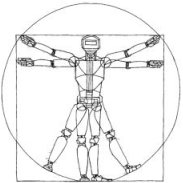Robotics: Science and Systems I
Adaptive Road Following using Self-Supervised Learning and Reverse Optical Flow
David Lieb, Andrew Lookingbill, Sebastian ThrunAbstract: The majority of current image-based road following algorithms operate, at least in part, by assuming the presence of structural or visual cues unique to the roadway. As a result, these algorithms are poorly suited to the task of tracking unstructured roads typical in desert environments. In this paper, we propose a road following algorithm that operates in a selfsupervised learning regime, allowing it to adapt to changing road conditions while making no assumptions about the general structure or appearance of the road surface. An application of optical flow techniques, paired with one-dimensional template matching, allows identification of regions in the current camera image that closely resemble the learned appearance of the road in the recent past. The algorithm assumes the vehicle lies on the road in order to form templates of the road's appearance. A dynamic programming variant is then applied to optimize the 1-D template match results while enforcing a constraint on the maximum road curvature expected. Algorithm output images, as well as quantitative results, are presented for three distinct road types encountered in actual driving video acquired in the California Mojave Desert.
Bibtex:
@INPROCEEDINGS{ Lieb -RSS-05,
AUTHOR = {David Lieb and Andrew Lookingbill and Sebastian Thrun},
TITLE = {Adaptive Road Following using Self-Supervised
Learning and Reverse Optical Flow},
BOOKTITLE = {Proceedings of Robotics: Science and Systems},
YEAR = {2005},
ADDRESS = {Cambridge, USA},
MONTH = {June},
DOI = {10.15607/RSS.2005.I.036}
}
